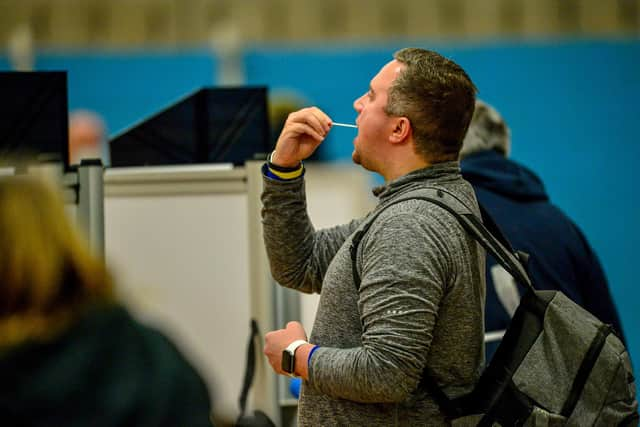Coronavirus in Scotland: How are lockdown level decisions made?
Several health experts have said Glasgow is likely to remain in level three, while Renfrewshire might enter this level as well.
Meanwhile Professor Linda Bauld of Edinburgh University told the Times the cases in Glasgow and Renfrewshire may be “heading towards level four”.
So how are decisions about local restriction levels made?
Advertisement
Hide AdAdvertisement
Hide Ad

Scotland’s level system came into force in the Autumn, but the criteria for deciding on levels has since changed.
The Scottish Government has repeatedly said it is following a “data not dates” approach, and as such has linked the decisions to levels of the virus in the affected area.
It follows six criteria for easing restrictions, set out by the World Health Organisation.
These are: Evidence showing Covid transmission is controlled; test and trace systems; minimising risk in key vulnerable groups (like in care homes); preventative measures like social distancing, handwashing and face masks; managing travel from high-risk areas; and engaging communities in the transition.
In practical terms, there are five “core indicators” the Scottish Government uses for determining the level in a certain area.
These are: The rate of cases per 100,000 people, the test positivity rate, projections for cases per 100,000 people, hospital capacity, and ICU capacity.
The government considers WHO thresholds, which are that an area with over 150 cases per 100,000 people and a test positivity rate of more than 20 per cent should be in level four, while anywhere will a case rate between 50 and 150 and test positivity between 5 and 20 per cent would be in level three.
An area with cases between 20 and 50 per 100,000 people and test positivity of between two and five per cent would be in level two, and case rates below 20 and test positivity below two per cent would mean level one.
Advertisement
Hide AdAdvertisement
Hide AdIt’s important to note that these are guidelines, which the Scottish Government has not said it will follow to the letter – case rates and test positivity can also diverge. Case numbers have increased recently in Scotland while test positivity has remained low, partly as a result of more symptomatic testing.
A message from the Editor:
Thank you for reading this article. We're more reliant on your support than ever as the shift in consumer habits brought about by coronavirus impacts our advertisers.
If you haven't already, please consider supporting our trusted, fact-checked journalism by taking out a digital subscription.
Comments
Want to join the conversation? Please or to comment on this article.
